Have you ever had a cactus that just wouldn’t grow? Perhaps it was supposed to produce blooms but never did. Or, perhaps it always looked weak and unhealthy. These issues, and others, could be caused by a lack of essential nutrients in the plant’s soil.
While it is true that cacti are hardy plants capable of withstanding some of the most severe climates, it is also true that they do benefit from fertilizer.
In this article, I am going to discuss the benefits of fertilizing cacti, recommend the best types of fertilizer, and plot the steps for how to properly apply fertilizer. Once you have finished reading this guide, you will be confident in your cactus care routine.
Bottom Line Up Front
I really hope you have time to read this article so you can learn more about how to properly fertilize your cactus, but if you don’t have time for that at the moment, here is a quick summary of the fertilizers I highly recommend:
- Best Overall – EarthPods Cactus & Succulent Plant Food Capsules
- Best Liquid Fertilizer – The Grow Co Succulents & Cactus Liquid Plant Food
- Best Nitrogen-rich Fertilizer – Dr. Earth Premium Gold Pure and Natural Fertilizer
- Best Indoor Fertilizer – Espoma Indoor! Plant Food
- Best Fertilizer Tea – Authentic Haven Brand Cow Manure
Benefits of Using Fertilizer
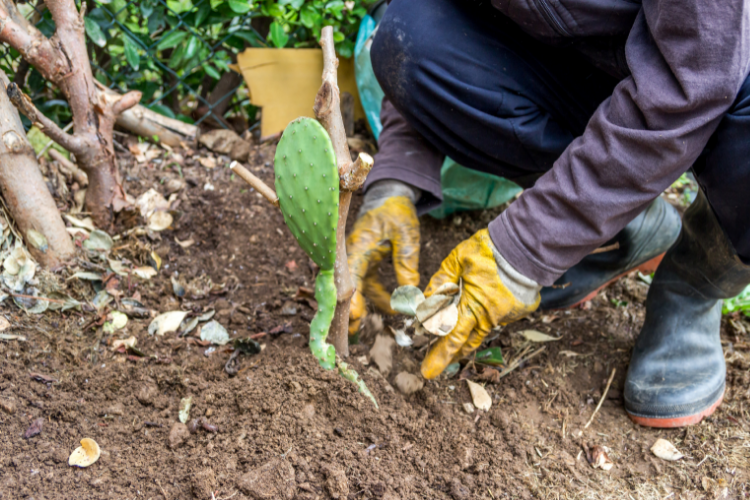
Cacti can benefit from fertilizer in very obvious ways. Fertilizing will help cacti to grow strong, to look healthy, and to produce blooms if it is a type that does so.
Applying fertilizer to cacti that are grown in the ground is not usually necessary, but cacti that are grown in plant containers usually require one feeding a year. This is because nutrients are consumed but not replaced in plant containers.
Fertilizer Ingredients
Let’s take some time to discuss the different types of fertilizers and the ingredients they are made from, then we can discuss which fertilizers are most recommended for use on cacti.
Organic vs. Inorganic
I always recommend using organic fertilizers over inorganic fertilizers. This is because organic fertilizers are safer for the environment, are absorbed more slowly, and are capable of providing the cactus with lower doses of NPK (discussed further in the following sections).
Another key reason for choosing an organic fertilizer over an inorganic or chemically-based fertilizer is the nutritional needs of cacti. Cacti need to feed upon organic compounds in soil for health reasons.
Organic fertilizer can be used alongside humic acid, probiotics, and mycorrhizae to create nutrient-rich soil that is basically alive. The symbiotic relationship between these ingredients will keep the cactus strong and healthy for much longer than any chemical fertilizer.
Humic Acid
This is a mixture of organic macromolecular compounds that are found in sedimentation layers known as Leonardite. It is often used alongside NPK and other organic nutrients to support plant growth. Humic acid is available on the market in granule, liquid, and powder form, or as part of a premade fertilizer mixture.
The uses and benefits of humic acid include:
- Crop quality boost
- Crop yield increase
- Plant nutrient enhancement
- Root growth stimulation
- Soil nutrient level regulation and enhancement
- Soil pH regulation
Plant Probiotics
This refers to bacteria that are considered beneficial to the health of a plant. Plant probiotics, also known as endophytes, are a relatively new study, but what we currently understand about them is that they are useful for converting unusable nitrogen into nitrate, which is a form of nitrogen that is useable for plants.
In summary, the more beneficial bacteria that a plant is provided the less bad bacteria that the plant is exposed to and this equates to a healthier plant.
Mycorrhizae
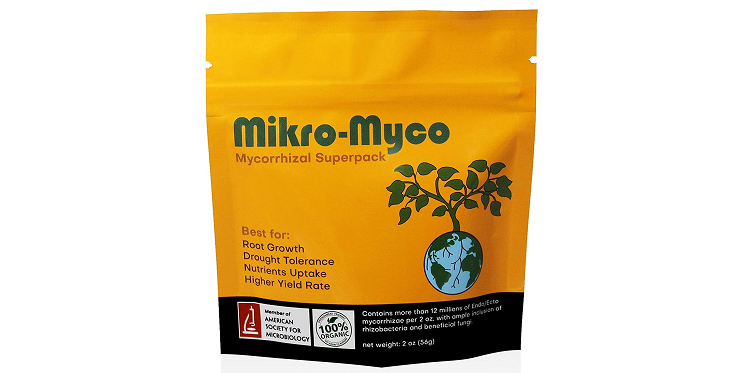
In laymen’s terms, this word means ‘fungal root’. While this may sound like a bad thing for your plants, it is actually a very good thing. This specific type of fungi is capable of having a symbiotic relationship with the root of a plant that can benefit both the host and the fungi.
NPK
These letters refer to the ratio of nitrogen (N), phosphorous (P), and potassium (K) used to make up the fertilizer. Different ratios of these chemical elements will benefit the cactus in different ways so it is necessary to understand the functions of each one.
- Nitrogen is used to help plants grow bigger and strong while developing better foliage. Better foliage serves the plant by drawing in more sunlight and nutrients to extend the length and better the quality of the plant’s life. When it comes to feeding cacti, however, it is best to use a fertilizer that is low in nitrogen. A 5-10-10 (NPK) fertilizer is optimal, but if you only have access to a 10-10-10 (NPK), you can use it as long as you dilute it.
- Phosphorous is used to boost growth in a plant’s root system. This makes it an excellent chemical element to include in a seed starter soil mix. It also assists the plant in fighting off diseases.
- Potassium is used to encourage blossoms and fruit to grow. If the cactus you own can produce blossoms, this is an essential element to use during its growing season.
Slow Release vs. Quick Release
It is best to use a slow-release fertilizer that is low in nitrogen to fertilize cacti. Slow-release fertilizers are less likely to burn the plant’s roots and are more capable of being absorbed by the plant as needed. Conversely, quick-release fertilizers are apt to burn the plant’s roots and cause damage that could inhibit its growth.
Water-Soluble vs. Granular Mixture
A water-soluble fertilizer allows you to dilute the fertilizer so that the plant is not overfed; whereas, a granular mixture requires precise measurements. Both types of fertilizer are fine to use on cacti but water-soluble fertilizers typically work the best.
How to Apply Fertilizer
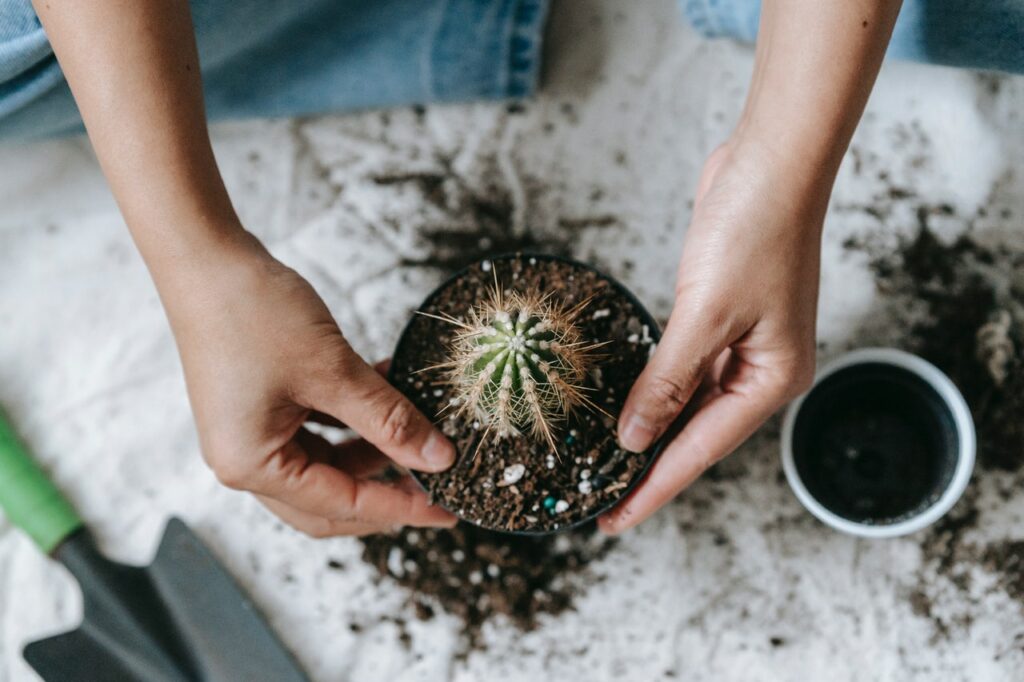
Selecting the best fertilizer for your cactus is completely unnecessary if you don’t consider how the fertilizer is best applied. Before you feed your cactus, read through the following tips:
- Always check for new growth at the beginning of its growing season before applying a dose of fertilizer
- Cacti are not heavy feeders so it is always better to feed them less than you think
- Do not feed a cactus that has been recently repotted
- If possible, dilute the fertilizer to at least half strength
- Never feed a cactus during its dormant season
- Select a fertilizer that is low in nitrogen
- Start with small doses and build up to larger doses over a few weeks
Recommended Fertilizers for Purchase
Now that we have discussed all that goes into fertilizer and what you should look for when selecting one to use on your cacti, we can move on to product recommendations. The following recommendations have been gathered using the following criteria:
- They are easy to use
- They are environmentally friendly
- They have at least a 4-star customer rating
EarthPods Cactus & Succulent Plant Food Capsules
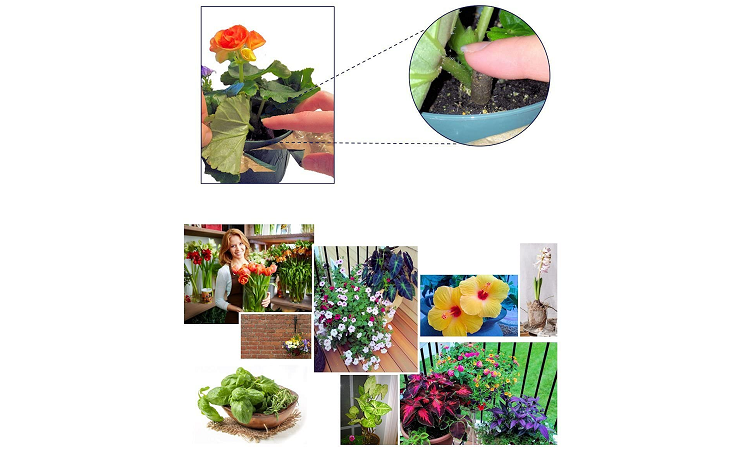
This is a great option for those who don’t want to mess with measuring or mixing ingredients. Using these capsules only requires that you push one into your plant’s soil and water it; fertilizing couldn’t be easier.
Pros
- Easy to use (no measuring or mixing)
- Safe for use around children and pets
- Uses a slow-release formula
- Eco-friendly
- No smell
Cons
- Expensive
The Grow Co Succulents & Cactus Liquid Plant Food
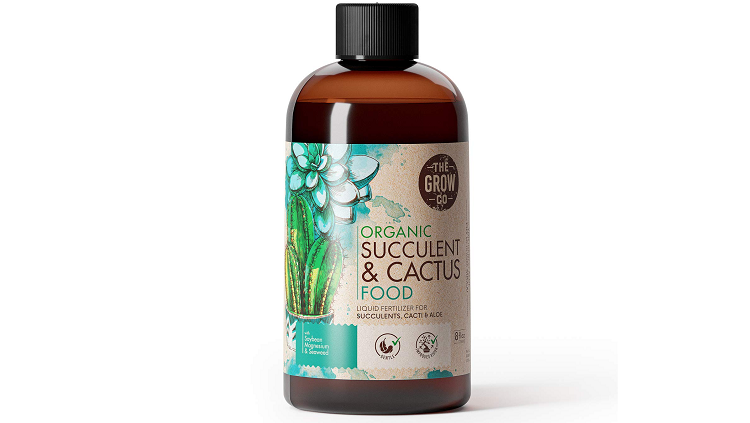
Although this option does require some minor math skills, it is not a complicated puzzle to master. Since this is a gentle formula that is designed for use on a wide variety of plants, it is considered an easy-to-use option.
Pros
- Safe for use indoors and outdoors
- Safe for use on all types of succulents and cacti
- Uses a balanced and gentle ratio of NPK
- Contains high-quality organic ingredients
Cons
- Requires some mixing and measuring
Dr. Earth Premium Gold Pure and Natural Fertilizer
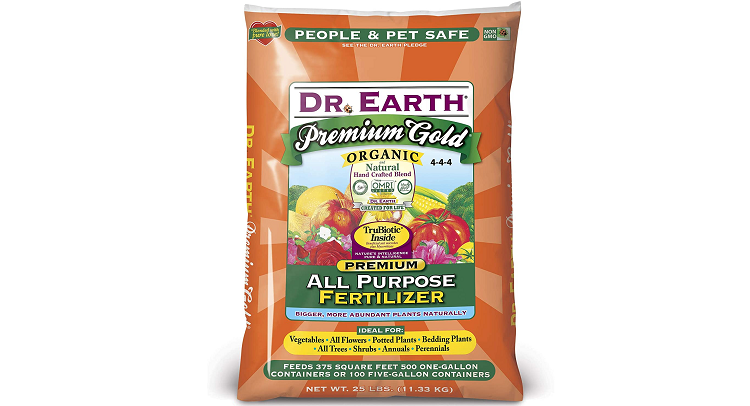
This is a nitrogen-rich fertilizer that is an excellent option for cacti that are languishing. While it does require a little more dilution and careful measuring than other types of fertilizer, the benefits are well worth the effort.
Pros
- Provides all the nutrients a plant needs to overcome disease
- Encourages roots, leaves, and blooms to grow stronger and better
Cons
- Requires accurate dilution
- A dose that is too concentrated can burn the plant’s roots and kill the plant
Espoma Indoor! Plant Food
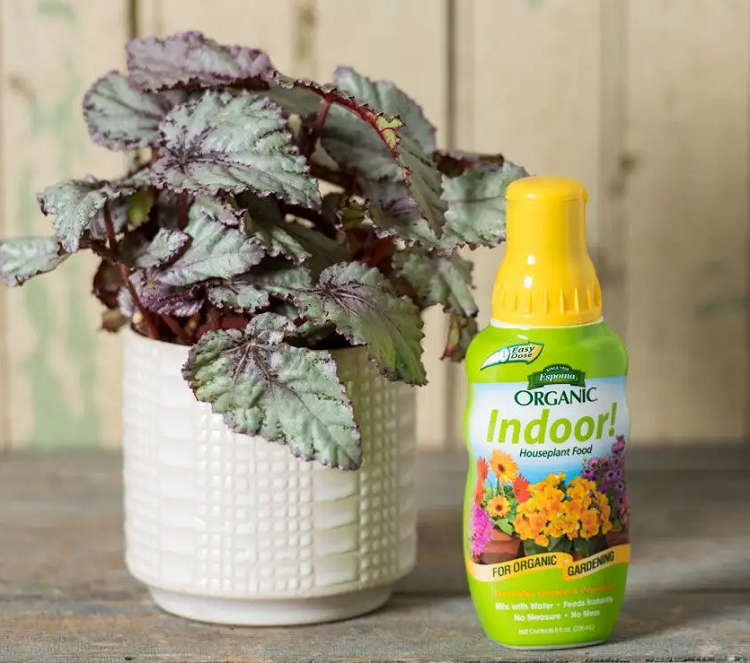
This is another option that is designed for easy use, less mess, and longevity. Simply pour some of the liquid fertilizer into the bottle’s Easy Dose cap. Pour the premeasured fertilizer into one quart of warm water and use this mixture to water your cactus.
The nutrient-rich formula will feed the plant for up to two weeks with no risk of root burn when properly applied.
Pros
- Uses a balanced and gentle ratio of NPK (2-2-2)
- Easy to use
- The formula includes humic acids, kelp extracts, and microbes
- Specially designed for indoor plants
Cons
- Requires feeding every few weeks
- It is not a slow-release formula
Authentic Haven Brand Cow Manure
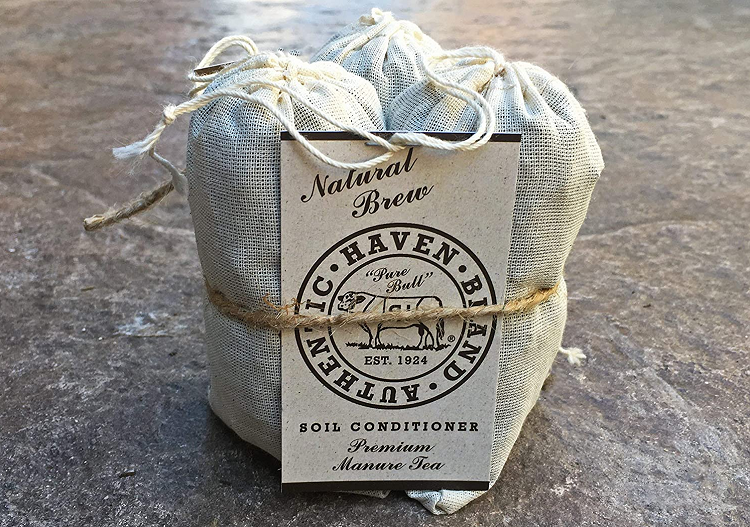
If you have a plethora of cacti, you may want to try this type of fertilizer. Basically, this is a fertilizer tea that you set in a few gallons of water to brew over several days. Once the tea has been brewed to your liking, you simply use it to water your plants. It is gentle and easy to use with no synthetic ingredients. Plus, it comes without the smell.
Pros
- Made with environmentally friendly ingredients
- Entirely compostable
- Great to use when growing seeds or transplanting sprouts
- Easy to use
- No risk of root burn
- Can be used several times during the plant’s growing season
Cons
- Requires a few days of preparation before use
Earth Worm Castings
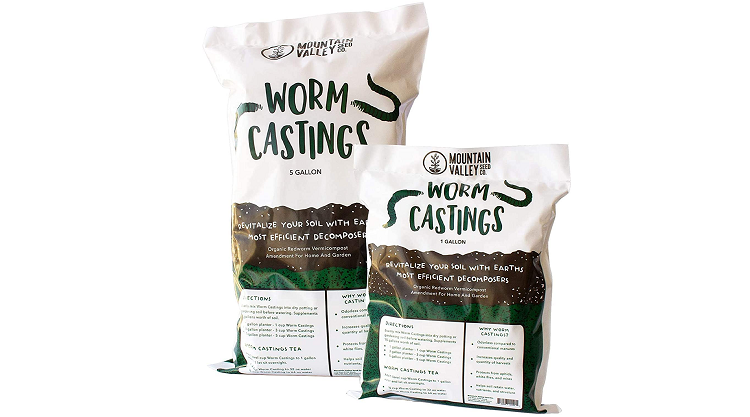
This is a really natural option. If you want something that can enrich and aerate your plant’s soil while repelling potential pests, then consider purchasing some organic worm castings. If you find that this method fits your gardening style extremely well, you may want to consider taking up vermicomposting for yourself.
Pros
- Organic and natural
- A simple and inexpensive method
- Provides enriching nutrients to the plant’s soil
- Does not burn plants
- Neutralizes the soil’s pH levels
- Repels certain types of pests, e.g., aphids, scale insects, spider mites
Cons
- Some types of plants require more fertilizer than just worm castings
- As a fertilizer, it does not take effect quickly
Recommended Homemade Fertilizers
Purchasing a premade fertilizer does make the process simple, however, this may not be the optimal way for you. If you are serious about providing your plants with the best, the safest, and the most natural nutrients, you may want to consider making your own fertilizer. Don’t worry, this process is not as complicated as it sounds and it can easily become a regular part of your plant care routine.
If you’re interested in making your own personal fertilizer blend, here are a few recipes for your consideration:
Fire Ash Fertilizer
This type of fertilizer is great to use if you need to balance out acidic soil. It is full of potassium, which is one of the chemical elements that cacti need the most. If you’re interested in trying this type of fertilizer, here is what you need to do:
Take fireplace ashes that have cooled and sprinkle them on the soil around your plants. Carefully, mix the soil and the ashes together until they have blended.
Compost
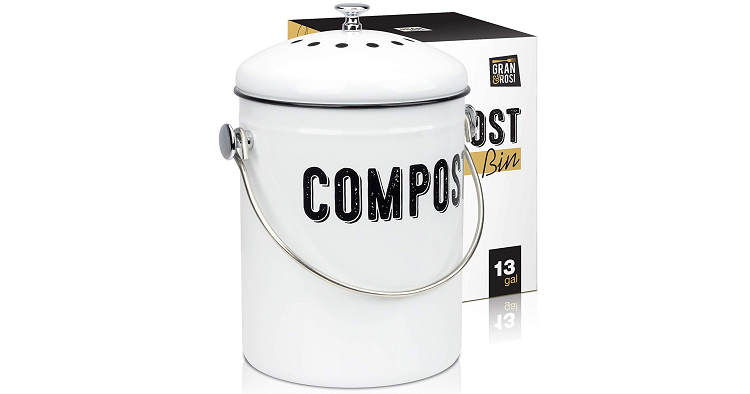
This type of fertilizer is created from organic materials that have been allowed to sit in a space that has adequate airflow and limited moisture. Once these materials have decomposed for a few weeks, they are ready to be blended into the soil to feed the plants. If you’re interested in this type of fertilizer, here is what you need:
- A compost bin
- Gloves
- Small shovel
- Organic material such as leftover fruits and vegetables, tea leaves, and coffee grounds
- Newspapers
- Leaves, grass, and old flowers
Follow These Tips to Create Your Own Compost
- Add a small amount of nitrogen fertilizer or garden soil to speed up decomposition
- Use a ratio of 4:1 browns to greens in your compost (browns are items such as coffee grounds and twigs; greens are items such as fruits or grass)
- Keep the compost slightly damp (too much moisture will cause it to rot but too little moisture will inhibit its decomposition)
- Aerate the compost each week by turning the compost bin or shoveling the compost
- Use the compost when it appears dark brown and crumbly but does not emit any warmth
- Only put weeds in your compost if your bin can produce enough heat to kill their seeds
- Never put an unhealthy plant or material in your compost because this can cause the spread of pests and disease
Banana Peel Fertilizer
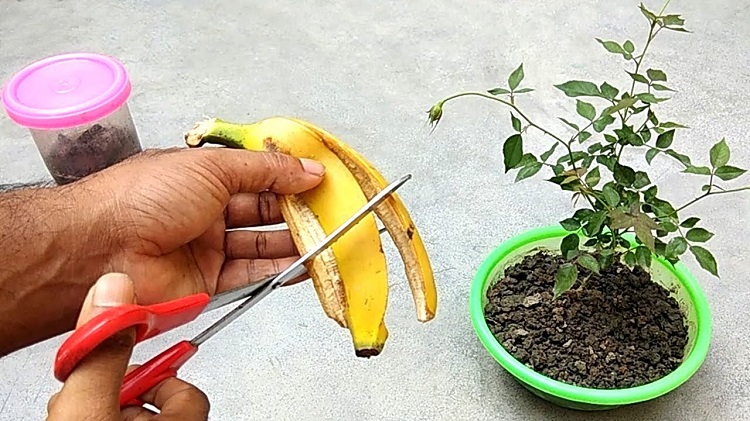
Provide your plants with plenty of potassium and phosphorous by creating a banana peel fertilizer. There are three different ways to prepare a banana fertilizer and I am going to list the steps for how to create each type. So, if you’re interested in trying a banana fertilizer on your cactus, follow these steps:
Baked Banana Fertilizer
- Clean the outside of the banana peels with soapy water and remove any stickers
- Place the banana peels on a sheet pan so that the inside of the peels face upward
- Bake the banana peels in the oven until they are black and crumbly (average cooking temperatures will work)
- Crumble or grind the banana peels and mix them into your plants’ soil
Pureed Banana Fertilizer
- Clean the outside of the banana peels with soapy water and remove any stickers
- Place the banana peels in a pitcher of water that is filled three-quarters full and is kept in your refrigerator
- Allow the bananas peels to sit in the pitcher of water for a week
- Drain off any excess liquid and keep it for a compost tea
- Puree the banana peels in a food processor or blender along with a little water
- Use the pureed banana peels in your plants’ soil
Banana Peel Compost Tea
- Clean the outside of the banana peels with soapy water and remove any stickers
- Place the banana peels in a pitcher of water that is filled three-quarters full and is kept in your refrigerator
- Allow the bananas peels to sit in the pitcher of water for a week
- Drain off the excess liquid and set the banana peels aside to use as a pureed banana peel fertilizer
- Add one cup of the liquid (compost tea) to one gallon of water and use it to feed and water your plants
Notes: If possible, use only organic bananas so that the chemicals used to grow the bananas do not seep into your plants’ soil. Also, remember that this type of fertilizer does not contain any nitrogen. If your plants need more nitrogen, you will need to provide this chemical element using a different type of fertilizer.
FAQs
Question: Do Soil pH Levels Impact the Health of Cacti?
Answer: Yes, most types of cacti grow better and receive more nutrients from neutral or alkaline soil.
Question: How to Dilute Fertilizer?
Answer: The ratio of dilution often depends on the type of fertilizer you are using and the type of plant you are using it on. When fertilizing a cactus, however, you should dilute 10-10-10 (NPK) or 5-10-10 (NPK) fertilizers to at least one-quarter of their strength.
When applying these fertilizers for the first time, it is often recommended that you dilute them to half their strength and slowly lessen the dilution. Another option for diluting a 5-10-10 (NPK) fertilizer is to mix it with a 1-7-6 (NPK) fertilizer.
Question: How to Tell if a Cactus Needs Fertilizer?
Answer: A cactus that could use a little fertilizer will often develop these deficiencies:
A lightening of color, particularly at its base
A wood-like appearance
An absence of blooms and fruit
Slowed growth
Question: When to Fertilize a Cactus?
Answer: Fertilizing a cactus too often or during the wrong seasons can cause the plant more harm than good. There are two points that you should always keep in mind when it comes to fertilizing a cactus. These are:
Always space out feedings (2 to 4 weeks between feedings is ideal)
Never fertilize a cactus during its dormant season
Question: What are the Differences between Compost and Fertilizer?
Answer: While these two plant boosters work in conjunction with one another, they actually do different jobs. Fertilizers are used to directly feed plants while compost is used to feed the soil and indirectly feed plants.
Another difference is how the two plant boosters are applied. Fertilizer is applied in a specific ratio dependent upon the type of plant being fed, while compost is applied in a generic manner that does not depend on the needs of a plant.
Concluding Thoughts
Understanding the ins and outs of cactus fertilization is essential to provide your plants with a proper environment. Fertilization can benefit your cacti by giving them a growth boost, which in turn will produce healthy-looking plants that will last for many years.
For me, I prefer EarthPods Cactus & Succulent Plant Food Capsules. I like this fertilizer best because it does not require any measuring, it doesn’t make a mess, and it is safe to use around my toddler.
My hope is that this guide has given you all the information you need to properly feed and care for your cacti. Educating yourself and moving forward in your gardening skills will give you the inspiration and the confidence to create a garden full of beautiful cacti all your own. May you always keep learning and growing and enjoy the results along the way.
Research Citations:
- Cactusway
- Succulent Plant Guide
- Dora
- ABC Blog
- Wisconsin Horticulture
- The Spruce
- Gardening Know How
- The Practical Planter
- Wiki How
- Succulent Alley
- Gardening Channel
Continue reading:
Lophocereus Marginatus (Mexican Fence Post Cactus)
Selenicereus Grandiflorus (Queen of the Night)
- Lophocereus Marginatus (Mexican Fence Post Cactus) - January 10, 2022
- Best Cactus Fertilizer Guide - January 9, 2022
- Selenicereus Grandiflorus (Queen of the Night) - January 3, 2022


